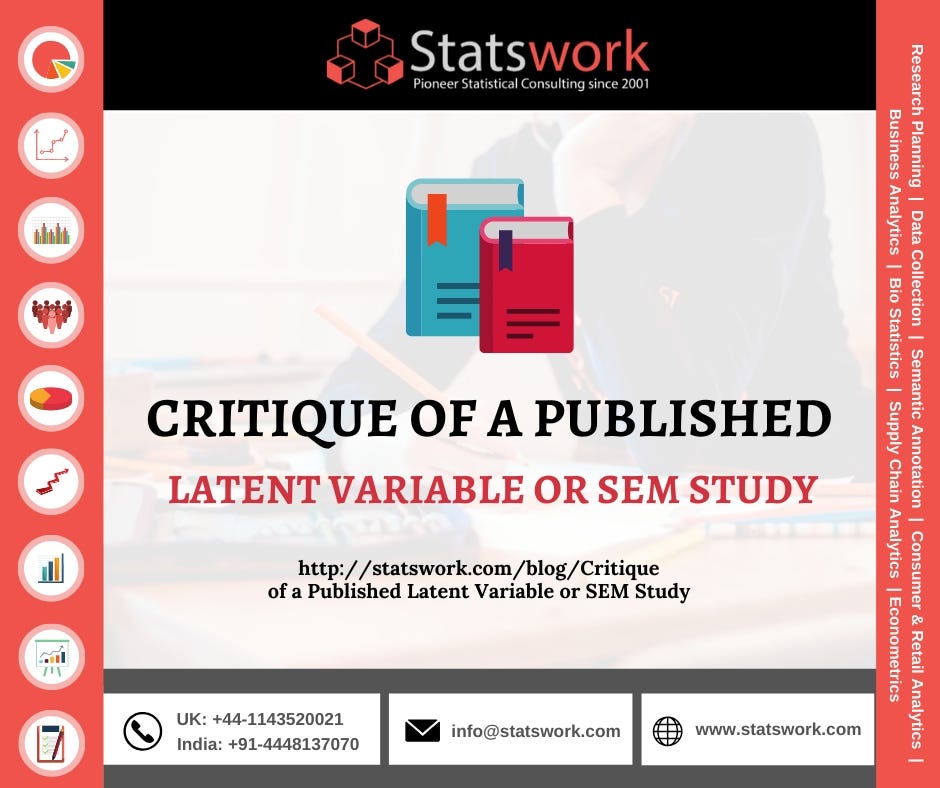Critique of a published latent variable or SEM study — Statswork
Structural equation modeling (SEM) becomes a major statistical technique in examining complex research problems in marketing and international business. In most research, the SEM uses covariance-based modelling and later few researchers argued to use the partial least square approach for SEM. In this blog, a critical review of the SEM technique presented in Richter et al (2014) is discussed with application to the business sector.

Six journals related to business management and marketing have been considered and the articles related to SEM has been scrutinized for this purpose. After the classification of methods used, it is found that 379 articles used covariance-based SEM and 45 used partial least square based SEM. Researchers are often interested in finding the same results by using these both methods of Structural equation modelling. However, the consistency of the partial least square method or the development of a new algorithm may satisfy this task fully and yield the same result as in covariance-based structural equation modelling.
Let's look at a few important factors which differentiate the covariance-based and partial least square SEM in modelling purpose.

However, the partial least square SEM is a discovery-oriented approach, that is, without having a prior model and testing the same, PLS-SEM acts as Predictive Analysis from the latent variable score. In addition. PLS-SEM is suitable for modelling complex business problems. In covariance-based SEM, the complexity of the model influence the goodness-of-fit statistics. For example, consider a chi-square test statistic, then if the complexity of the model or the number of parameters increases then the chi-square value will get decreased. Hence, the result will be either the correct model or the highly fitted model because of the complexity of the problem.
In the case of PLS-SEM, the number of parameters is not a problem (complexity) until the sample size is sufficient. Also, PLS-SEM provides more appropriate prediction than the maximum likelihood estimation in CB SEM (Reinartz et al. 2009). Hence, it is important to decide which approach is useful for the analysis while carrying out the research. The following table explains the number of articles used covariance-based and partial least square SEM for the review purpose.

Further, it is advised to make a critical assessment of the methodology or an analytical approach before making a business decisions. If the objective is to develop the Theoretical Framework, then the PLS-SEM is appropriate and the characteristics such as sample size, assumptions of the distribution, the type of measurement should be considered as secondary one.
Thus, usage of PLS-SEM becomes a valid methodology to understand the relationship between the international business and the marketing strategies. In this blog, I have listed out few critics of the latent variable models with an application to international marketing and business. However, this may not be the case if you take another field of research. Thus, a proper guideline should be considered before processing any Structural Equation Modeling.



.jpg)
Comments
Post a Comment